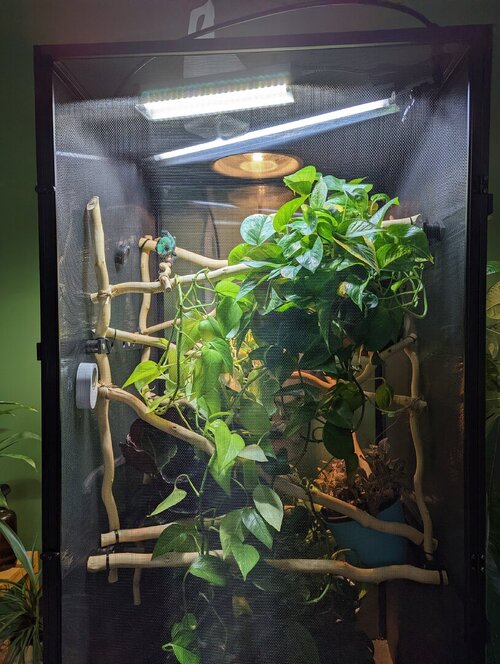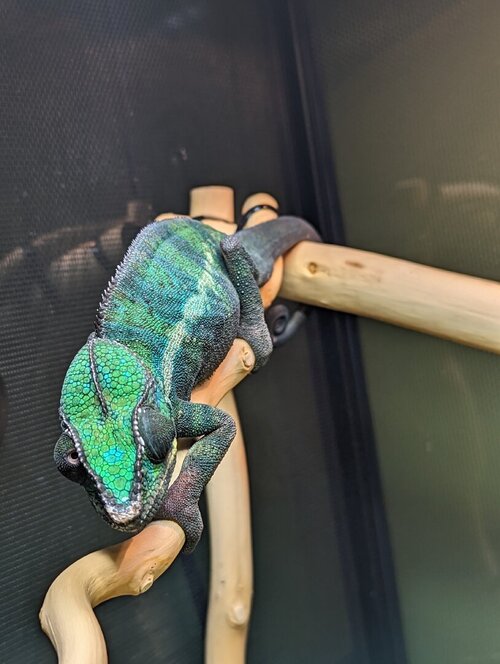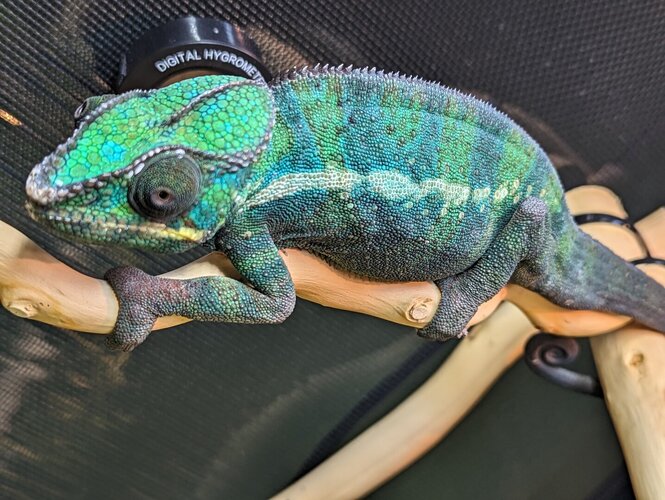Chameleon Info:
Cage Info:
Current Problem – We have had this chameleon for approx. 1.5 months and his color has not improved. We did initially have him in a glass enclosure that did not work out for him, so we changed it to a screened enclosure on 10-13. His color did not improve, and I am concerned I am still not doing something correctly. He runs to the door of the cage at times, seemingly requesting to be let out. I bring my hand under him, and he runs on my arm. I place him in the window nearly every day and he typically just sits and watches outside. His colors become more vibrant without him becoming irritated. Once placed back in the cage he becomes dark immediately and runs to the bottom of the cage, scratching to get out. He calms down shortly after and returns to a normal sitting position. He shed after we got him from a chameleon breeder, so I don’t believe his dark colors are stemming from a future shed. I have scoured the internet for solutions, but I don’t feel that I have been doing anything incorrectly in my care.
The pictures include his current cage setup, his mid-day colors in the cage, and his colors after removing him from the window. He was only in the window for approx. 20 minutes.
- Your Chameleon – 9-month-old male panther chameleon. I have had him for approx. 1 and a half months
- Handling – Recently it has been once a day to let him out to the window. We have slatted blinds that he seems to enjoy looking out. His color brightens nearly immediately when we let him out. He stays out for no more than an hour and is put up.
- Feeding – He is fed every day or every other day with dubia roaches and sometimes 1-2 meal worms. They are gut loaded with carrots and mustard greens 4-6 hours prior to feeding.
- Supplements – Dusted with Fluker’s Calcium every feeding. Reptivite with D3 once every ~15 days. Bee pollen added roughly once a week.
- Watering – Using MistKing system and had mister at times. Misting at 0630 for 5 min, 1300 for 1.5 min, and at 2000 for 5 min. I have seen him drink at times off of the live plants.
- Fecal Description – Looks like perfect chameleon feces. Urate is bright white and feces is fully formed.
Cage Info:
- Cage Type – 2x2x4 screen cage.
- Lighting – 150 W basking bulb that is lifted off the cage 2 inches, for a total of approx. 8 inches from top of chameleon. 22-inch T5 6% UVB spread vertical across the cage. LED grow lamp used for plants. 12 hours on and 12 hours off.
- Temperature –
Daytime – Basking spot 88-92. Mid cage 76-78 F. Floor 69 - 71. What temp range Overnight – Lowest recorded was 66 for now.
All measurements come from 2 different temp sensors. - Humidity -
Daytime – Ranges from 45-55% throughout the day. If I see it drop below 45 I typically mist the cage for a couple minutes.
Overnight – Upwards of 96% humidity after misting. I have seen it drop to 78% once when I awoke in the middle of the night from the sensor. - Plants – Mainly Potos are spread throughout the cage. I have also included a nerve plant, a bromeliad, a calathea dottie, and swiss cheese plant.
- Placement – In our front room. It is typically a low traffic area and there are only two of us in the household. We do have a dog that the chameleon obviously does not like, so we keep her out as much as possible. Top of cage measures 6 ft 4 inches. \
- Location – Georgia USA.
Current Problem – We have had this chameleon for approx. 1.5 months and his color has not improved. We did initially have him in a glass enclosure that did not work out for him, so we changed it to a screened enclosure on 10-13. His color did not improve, and I am concerned I am still not doing something correctly. He runs to the door of the cage at times, seemingly requesting to be let out. I bring my hand under him, and he runs on my arm. I place him in the window nearly every day and he typically just sits and watches outside. His colors become more vibrant without him becoming irritated. Once placed back in the cage he becomes dark immediately and runs to the bottom of the cage, scratching to get out. He calms down shortly after and returns to a normal sitting position. He shed after we got him from a chameleon breeder, so I don’t believe his dark colors are stemming from a future shed. I have scoured the internet for solutions, but I don’t feel that I have been doing anything incorrectly in my care.
The pictures include his current cage setup, his mid-day colors in the cage, and his colors after removing him from the window. He was only in the window for approx. 20 minutes.
Attachments
-
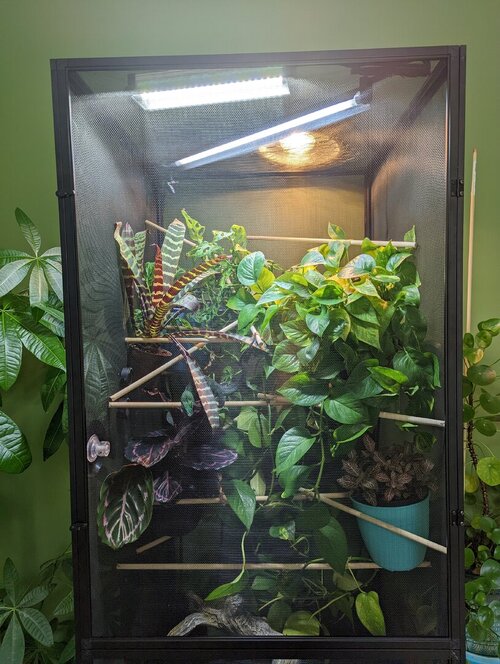 PXL_20221028_153709525.MP.jpg225.5 KB · Views: 164
PXL_20221028_153709525.MP.jpg225.5 KB · Views: 164 -
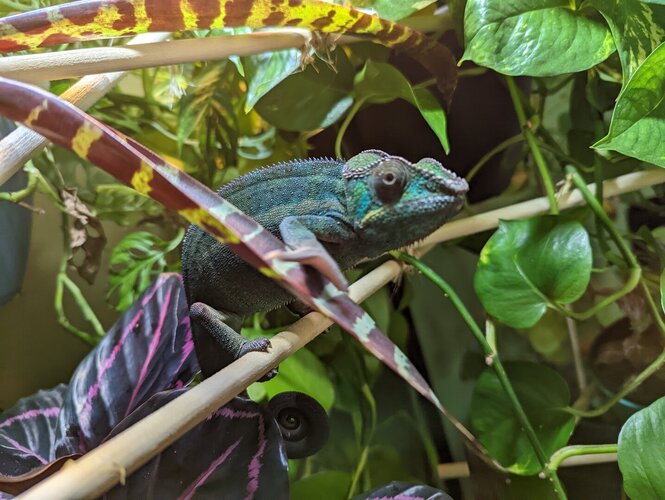 PXL_20221028_153732101.MP.jpg256 KB · Views: 177
PXL_20221028_153732101.MP.jpg256 KB · Views: 177 -
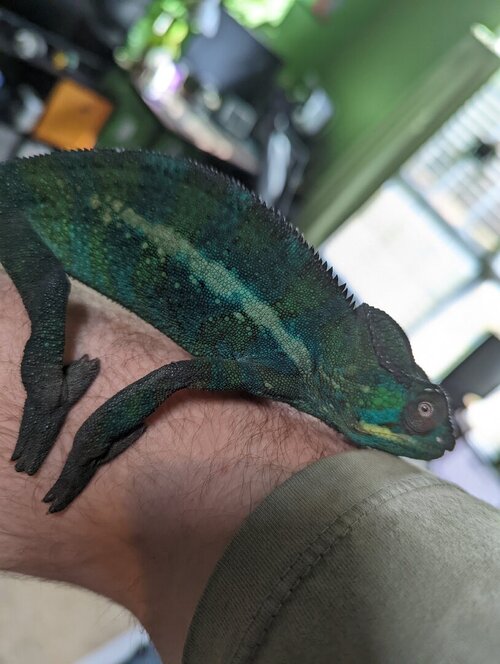 PXL_20221028_153759420.MP.jpg139.3 KB · Views: 181
PXL_20221028_153759420.MP.jpg139.3 KB · Views: 181 -
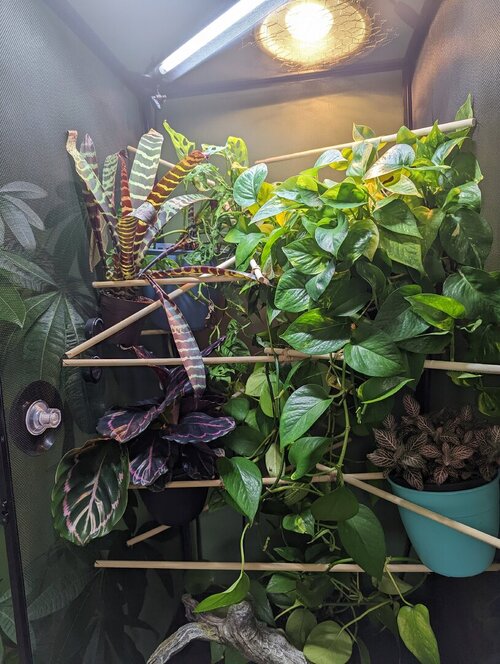 PXL_20221028_153823713.MP.jpg225.5 KB · Views: 145
PXL_20221028_153823713.MP.jpg225.5 KB · Views: 145 -
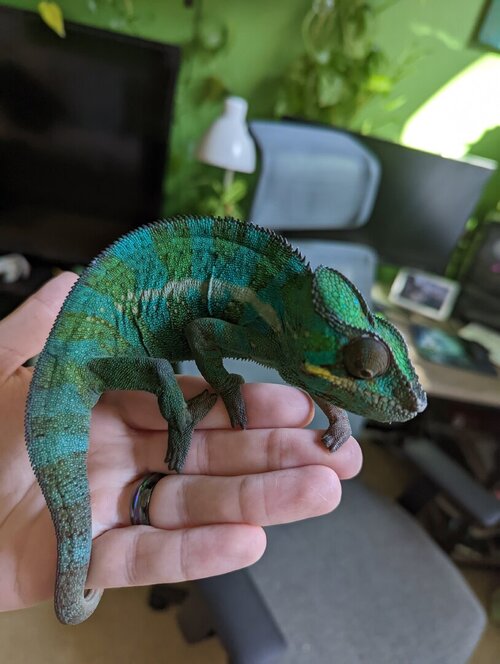 PXL_20221028_160719403.MP.jpg122.3 KB · Views: 144
PXL_20221028_160719403.MP.jpg122.3 KB · Views: 144 -
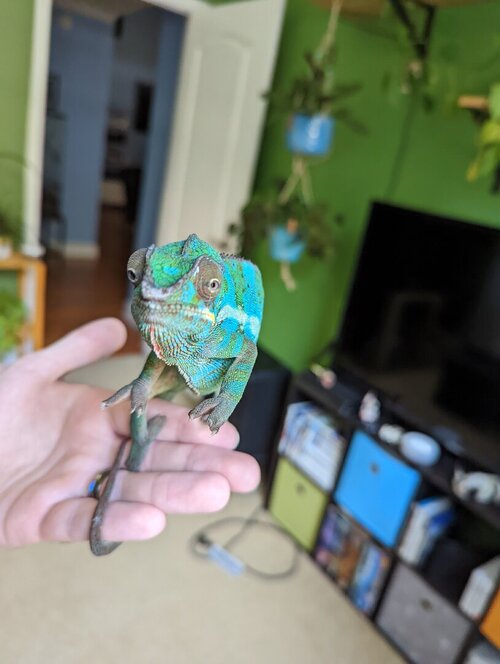 PXL_20221028_160724698.MP.jpg90.3 KB · Views: 142
PXL_20221028_160724698.MP.jpg90.3 KB · Views: 142 -
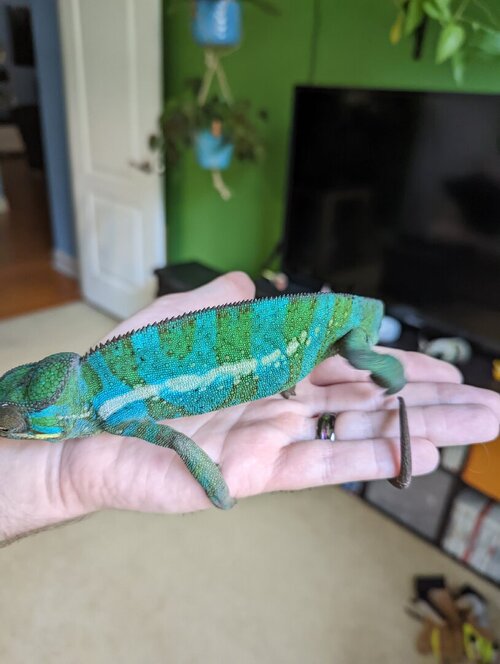 PXL_20221028_160727600.MP.jpg104.8 KB · Views: 159
PXL_20221028_160727600.MP.jpg104.8 KB · Views: 159






